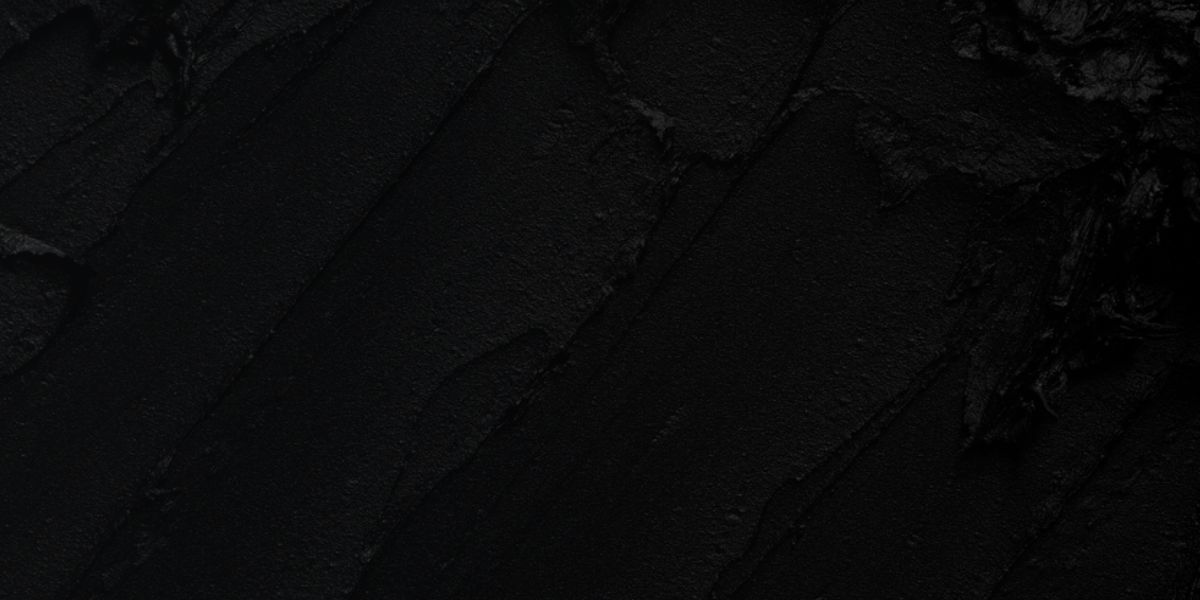Let’s be real – when it comes to skincare, most of us are clueless. We don’t know what to look for on the label, and we definitely don’t know how to pronounce all of those ingredients. But that’s okay, because we’re here to help! In this blog post, we’ll break down the 10 steps to understanding skincare labels and ingredients, so you can feel confident about the products you’re using on your skin.
So, let’s dive in!
First thing’s first – you’ve got to understand the different types of products out there. Skincare can be broken down into five main categories:
1. Cleansers
These products help to remove dirt, oil, and makeup from your skin. Examples include face washes, scrubs, oils, and cleansing cloths.
Learn more about skincare cleansers (and their benefits) in this helpful article by Neostrata!
2. Exfoliators
Next, exfoliators are used to slough off dead skin cells, revealing a more radiant complexion. This can be done with physical exfoliants like scrubs, or chemical exfoliants like AHAs and BHAs.
3. Toners
Toners help to balance your skin’s pH levels and prep it for the next steps in your regimen. We recommend this article by Neutrogena to learn more about facial toners!
4. Moisturizers
After this, moisturizers are used to keep your skin hydrated and reduce dryness. Creams, lotions, balms, serums, and oils all fall into this category. If you need help finding out which moisturizer is best for your skin type, this article by Healthline is a terrific place to start!
5. Sun Protection
Last but certainly not least, sun protection is a MUST for any skincare routine! You should look for products with SPF (sun protection factor) ratings of 30 or higher. Furthermore, make sure to re-apply throughout the day.
Bonus Category: Skincare Serums
Serums are a bit of an outlier when it comes to skincare products, but they can be incredibly helpful in targeting specific skin concerns. When you’re looking for serums, you want to specifically search for active ingredients like retinol, vitamin C, and hyaluronic acid. These ingredients help to address wrinkles, hyperpigmentation, and dehydration.

The 10 Steps to Understanding Skincare Labels and Ingredients
Now let’s get into the nitty-gritty of reading skincare labels! This way, you can make sure that you know EXACTLY what you’re putting on your face!
Pro Tip: Dream of a career in professional skincare? Learn how to become a fully trained, certified, and working Skincare Consultant in just 5 easy steps!
Step #1: Know Your Skin Type
You can’t properly choose skincare products if you don’t know your skin type. That’s just a fact!
There are six main skin types that all people fall under:
- Normal skin;
- Dry skin;
- Oily skin;
- Combination skin (either Combination Dry or Combination Oily);
- Acneic skin;
- And Sensitive skin.
You can learn more about these different skin types in this awesome article by QC Makeup Academy executive instructor, professional makeup artist, and certified Skincare Consultant, Nathan Johnson!
How to Tell Your Skin Type
Once you know what type of skin you have, it’s time to figure out how to tell your skin type. One way that a lot of people do this is through a process called the “tissue test”.
To do the tissue test, wash your face with a mild cleanser and pat it dry. Next, press a single layer of tissue onto different parts of your skin – forehead, cheeks, nose, and chin.
If you find that the tissue has come away without any oil on it (or very little), you likely have normal or dry skin. If it’s come away with noticeable oil, you probably have oily skin.
Another way to identify your skin type is to look closely at your face – and know what to look for. For instance:
- If you have normal skin, it should feel soft, balanced, and relatively free of blemishes.
- If you have dry skin, it will often feel tight, flaky and/or red.
- For those with oily skin, there may be a noticeable shine to your face. Additionally, pores may look larger than usual.
- Combination Dry skin may feel dry in some areas and oily in others.
- On the other hand, combination Oily skin can be shiny all over but may have larger pores more concentrated on your t-zone (the area of your forehead, nose, and chin).
- Acneic skin will often have active breakouts or blackheads present.
- Lastly, sensitive skin can range from being dry to oily and often has a feeling of tightness. It can be susceptible to reactions from harsh products.
Once you’ve identified your skin type, you can move onto Step #2…
Step #2: Check the Expiration Date
Safety first – you want to make sure that all of your products are still fresh and effective. Most products have a shelf life of around one year and will have “expires after” dates written somewhere on the packaging.
When you use expired skincare products, you risk the following:
- Irritation or allergic reactions;
- A decrease in the effectiveness of the product;
- Bacterial growth, etc.
Therefore, make sure that you’re regularly checking your products for expiration dates. This way, you can replace them before they stop working as well!
Step #3: Read the Skincare Labels and Ingredients List
Obviously, this is going to be arguably the biggest step in understanding skincare labels and ingredients.
What’s great about skincare labels is that they often provide a wealth of information! Usually, you’ll find the name of the product, directions for use, list of ingredients, and other important information.
The most important part, however, is the ingredient list. This section will tell you EXACTLY what is in your product and how it works!
For instance, many skincare products contain antioxidants, emollients, and humectants. All of these ingredients work together to nourish, soothe, and protect the skin from environmental damage.
Additionally, you’ll want to be aware of any potential risks or allergies associated with certain ingredients. For example, some people may be allergic to fragrances, parabens, or sulfates.
Therefore, if you see any of these ingredients listed on the label, it’s best to stay away from that product! Instead, look for something with more natural ingredients.
By becoming familiar with skincare labels and ingredient lists, you can make sure that you’re using the best products for your skin type!
Step #4: Check for Active Ingredients
Another thing to look for when reading skincare labels is active ingredients. These are the ingredients that actually interact with your skin in some way – be it moisturizing, calming, exfoliating, etc.
For example, salicylic acid is a common active ingredient used to treat acne and reduce inflammation. Retinol is another active ingredient that can help reduce wrinkles and other signs of aging.
When looking at skincare labels, make sure to check for active ingredients and make sure they match your skin type and needs.
Pro Tip: Make sure to watch this informative webinar to discover the TOP 5 secret skincare ingredients that ALL of your products need!
Step #5: See if the Skincare Ingredients Include any Fragrances
Fragrances can be an important part of a skincare routine, as they can offer a pleasant scent and make the product more enjoyable to use.
However, it’s important to make sure that any fragrances included in your products are natural and NOT synthetic! Synthetic fragrances often contain chemicals that may irritate or even damage your skin.
So, when looking at skincare labels and ingredients list, make sure to check for any fragrances listed. If you’re not sure if a fragrance is natural or synthetic, do some research online!
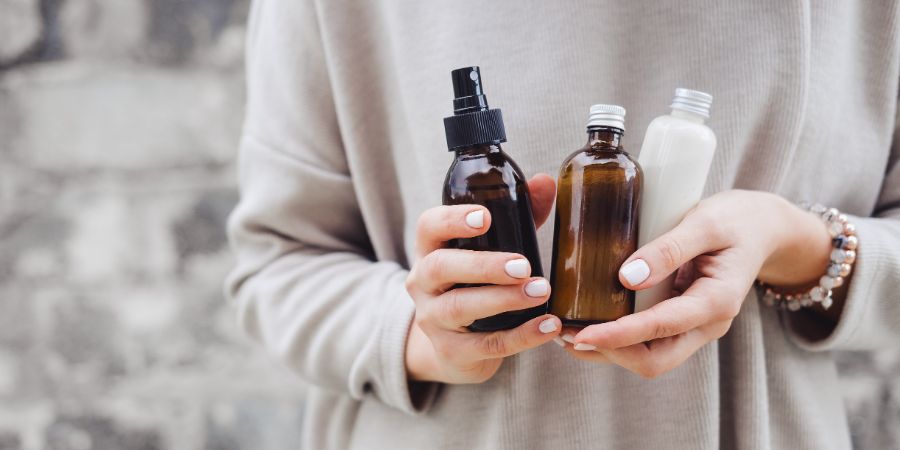
Step #6: Research Any Unfamiliar Ingredients
Next, if you come across any unfamiliar ingredients on the label, do some research! Many skincare products contain a variety of different ingredients, so it’s important to know what each one does.
For instance, some products may include ceramides, which are lipids that help to lock in moisture and protect the skin barrier. Others may include hyaluronic acid, which is known for its ability to hydrate the skin.
Doing some research will help you to better understand product labels and how the different ingredients work together.
Step #7: Research the Brand
Speaking of doing research, it’s always a good idea to do dig into the brand themselves when understanding skincare labels and ingredients.
You can often find out more information on a brand’s website or social media pages. Here, you’ll be able to learn more about how the product was made, what ingredients were used, where it was sourced from, and other important details.
For instance, if you want to only use all-natural products, you can look for brands that are certified organic or use natural ingredients. In the same breath, if you want to avoid brands that test on animals, you can look for brands that are certified cruelty-free.
Knowing the brand behind the product is just as important as understanding skincare labels and ingredients. This will help you to make an informed decision when it comes to buying skincare products!
Step #8: Read Directions for Use
Before using a product, it’s always important to read the directions for use.
Some products may require you to apply them differently than others, so this is an essential step in understanding skincare labels and ingredients. For instance, some products may need to be used twice a day while others may only need to be used once or twice a week.
This information can be found on the label and should be carefully followed to ensure optimal results and safety.
Step #9: Consider Trying a Sample
At this point, if you’re still unsure about a skincare product after reading the label and researching the ingredients, it can be helpful to try a sample.
Many skincare brands offer free samples or travel-size versions of their products so you can test them out before committing to buying the full-size version. This way, you can see if the product works for your skin type before spending money on it!
Step #10: Consult with a Certified Skincare Professional
Lastly, if you’re still feeling uncertain about which products are best for your skin type, don’t be afraid to consult with a Skincare Consultant! A qualified skincare professional can provide advice on which products and ingredients are best for your skin type, as well as answer any questions you may have about skincare labels and ingredients.
Plus, if you’re ever unsure about a product or ingredient, they’ll be able to provide more information on it, too!
Pro Tip: Or you can become a certified International Skincare Consulting Professional (ISCP) yourself in as little as 2 months by enrolling in QC Makeup Academy’s self-paced, online Skincare Course!
How to Read Skincare Labels: Must-Have Ingredients
Now that you know how to read skincare labels and understand ingredients, let’s take a look at some must-have ingredients for your routine:
- Hyaluronic acid – This humectant helps the skin to retain moisture
- AHA (Alpha Hydroxy Acid) & BHA (Beta Hydroxy Acid) – AHA and BHA gently exfoliate the skin to help reduce acne, blackheads, and other blemishes
- Antioxidants – These help protect the skin from environmental and free radical damage
- Vitamins C and E – These vitamins help to nourish the skin and support its natural barrier
- Glycerin – This emollient helps keep the skin hydrated and soft
- Ceramides – These lipids help to lock in moisture and protect the skin barrier
- Niacinamide – This vitamin helps to reduce inflammation and even out skin tone
- Retinol – This form of Vitamin A helps improve skin texture and reduce the appearance of wrinkles
- SPF – An essential ingredient to protect skin from UVA/UVB rays
These are just a few of the many ingredients that can be found in skincare products. As you continue learning more about skincare, you’ll become familiar with other ingredients and their benefits for your skin!
Skincare Ingredient List Order: Ranked Most to Least Important
Another thing to keep in mind when understanding skincare labels and ingredients is the order of the ingredient list. Usually, ingredients are listed in order from most to least. As such, it’s important to know which ones should come first!
Here’s a helpful guide to the ranked order of importance:
- Active ingredients (like retinol and Vitamin C)
- Humectants (like hyaluronic acid and glycerin)
- Emollients (like ceramides, shea butter, and jojoba oil)
- Surfactants (used to help lift dirt and oil off the skin)
- Preservatives (to prevent bacteria growth)
- Fragrances (optional, depending on your preference)
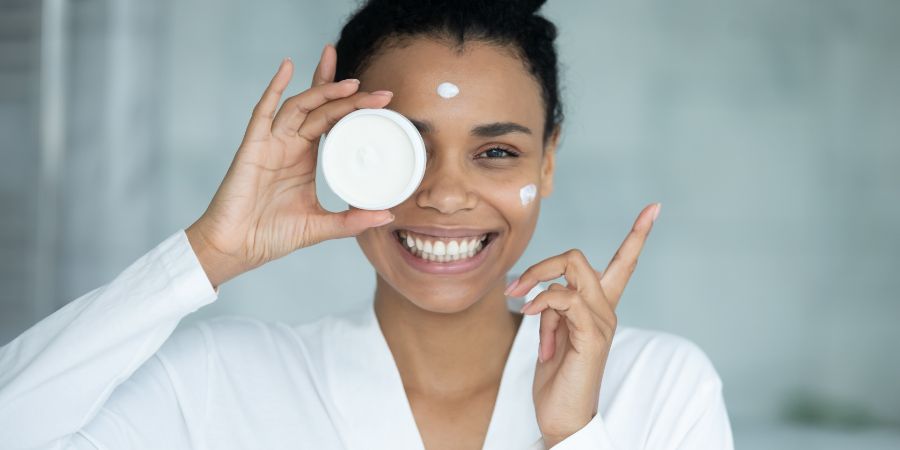
How to Read Product Ingredients: Skincare Ingredients to Avoid
On the other hand, there are certain skincare ingredients that you should avoid, as they can be potentially irritating or damaging to the skin.
Some of these unwelcome ingredients include:
- Synthetic/artificial fragrances
- Parabens
- Sulfates
- Phthalates
- Formaldehyde-releasing preservatives, etc.
These chemicals can cause an array of skin troubles such as dryness, sensitivity, and irritation. So, make sure to read the ingredients list carefully and avoid anything that could potentially harm your skin!
Skincare Ingredient Checker: Recommended Apps
Now, sometimes skincare brands can be a bit sneaky in their packaging. They may group several ingredients under one name. Sometimes, they might use scientific names that are hard to understand. Or worst of all, they don’t even list the ingredients on the product packaging!
Fortunately, there are several apps you can use to make sure the products you’re buying are safe and effective. For instance, Environmental Working Group’s Skin Deep® Database is an excellent app to check if a product contains any of the ingredients that should be avoided.
Additionally, the Think Dirty App allows users to scan barcodes on their skincare products to check the ingredients. And if you want to check out even more options, The Good Face Project has a list of their 7 most recommend ingredient checker apps at your disposal!
How to Find the Percentage of Ingredients in Skincare Products
Here’s another secret: it’s not enough for a skincare product to have an ingredient listed on the label. You should also check if that active ingredient is present in a high percentage!
For instance, if your anti-aging moisturizer has retinol listed as an ingredient but it’s way further down the list, chances are that it won’t be effective in treating wrinkles and fine lines. So, make sure to check the percentage of active ingredients in your skincare products!
How to Do This
The best way to figure out the percentage of ingredients in skincare products is to do a little math. The rule of thumb is to divide the weight of each ingredient listed by the total weight of all the ingredients and then multiply it by 100. This will give you the percentage of each active ingredient present in your product!
For example, if a moisturizer contains 20% hyaluronic acid, this means that out of the total weight of all the ingredients in the product, 20% is made up of hyaluronic acid.
Lastly, be sure to check whether the percentage of active ingredients fall within the recommended range. This will ensure that your skincare product is as effective as possible!
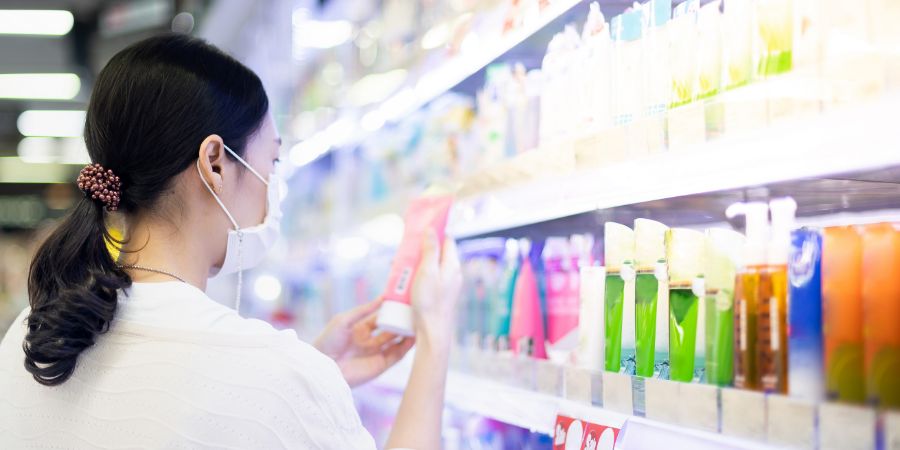
FAQs
Finally, let’s wrap things up by taking look at and answering some frequently asked questions on the subject of understanding skincare labels and ingredients:
Q: Any tips on how to label skincare products yourself?
A: Labeling your own skincare products can be a tricky task. Be sure to research the correct labeling regulations and safety guidelines for your country or region before you get started. Additionally, make sure that the labels are accurate and up-to-date. Lastly, always include an ingredients list on the packaging!
Q: Are natural skincare products always better than chemical-based ones?
A: Although the answer is USUALLY “yes”, the honest truth is that this isn’t always the case. In reality, both can be equally as effective and safe if they use the same active ingredients (and in the same percentages).
What makes natural skincare products superior is that they don’t contain any of the harsh chemicals or preservatives that are often found in chemical-based skincare products. So, if you want to ensure that the natural skincare products you’re purchasing legitimately are better than their chemical counterparts, make sure to look into their ingredients list and percentages!
Q: What are some red flags when reading skincare labels?
A: Keep an eye out for any ingredients that you can’t pronounce, as well as those with names that are too long and complicated. Additionally, check if there’s an excessive amount of preservatives, fragrances, and colorants present in the product. These could be signs that the skincare product isn’t as effective or safe as it claims to be!
Pro Tip: Are makeup removers actually damaging to our skin? The answer will surprise you!
Q: What is an INCI list?
A: An INCI list is an abbreviation for International Nomenclature of Cosmetic Ingredients. This is the official way that skincare product ingredients are listed and can be found on the packaging of any skincare product you purchase.
Q: How do you read an INCI list?
A: An INCI list should always be read from the top to bottom, with the most prominent ingredient coming first. For example, if you have a moisturizer that contains hyaluronic acid as its active ingredient, it should be listed first on the INCI list.
This doesn’t always mean that it is present in the highest percentage, however. Thus, make sure to always check the percentages of the active ingredients before you make a purchase!
Q: What are the 7 skincare steps?
A: The 7 skincare steps are as follows:
- Cleanse
- Exfoliate
- Tone
- Treat
- Moisturize
- Sunscreen
- Nighttime Skincare Routine (optional)
These steps should be done in that order in order to properly cleanse, nourish, and protect your skin.
Q: What are the 3 most important skincare products?
A: The three most important skincare products are:
- A cleanser;
- A moisturizer;
- And sunscreen.
These three products work together to keep your skin healthy and protected from the elements. Additionally, they can also help reduce wrinkles, prevent acne breakouts, and even out any discoloration in your complexion!
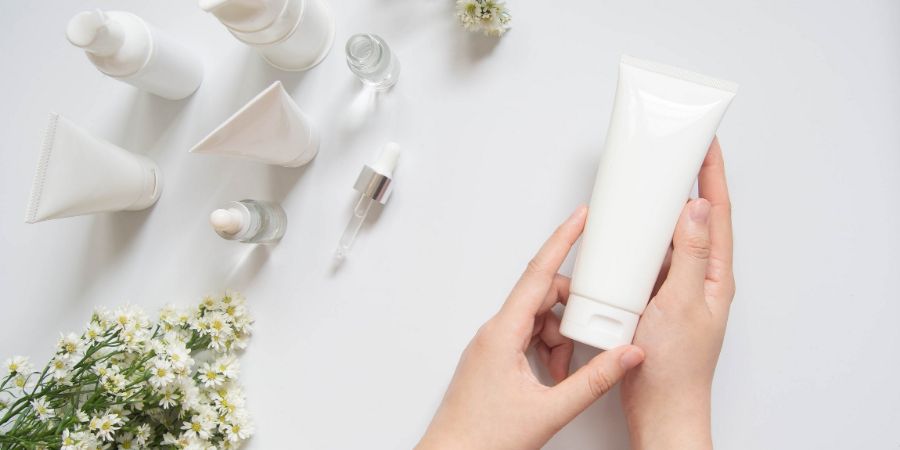
Conclusion
We hope you found this article on understanding skincare labels and ingredients helpful! Now that you know how to read skincare labels, as well as which ingredients to look for in skincare products, you’ll be sure to pick the best product for your skin type.
Remember: always check the label before buying a new skincare product, and take the time to research the ingredients used in order to ensure that you’re getting the best possible product for your skin.
Thanks for reading – and good luck on your skincare journey!
